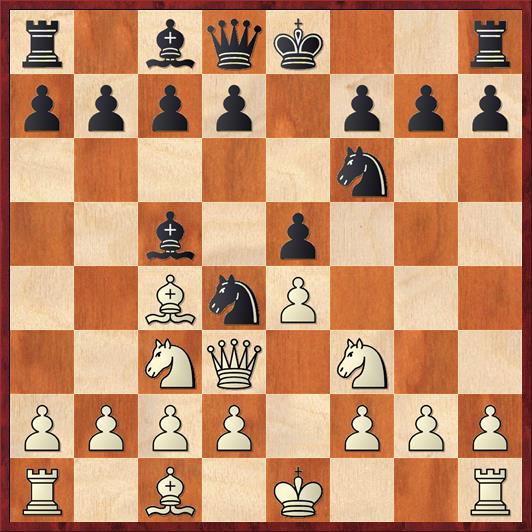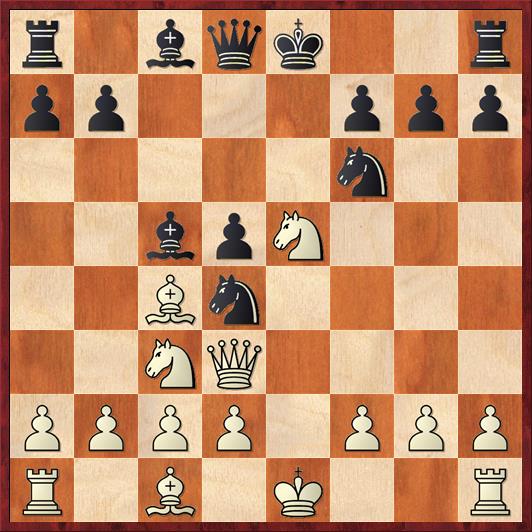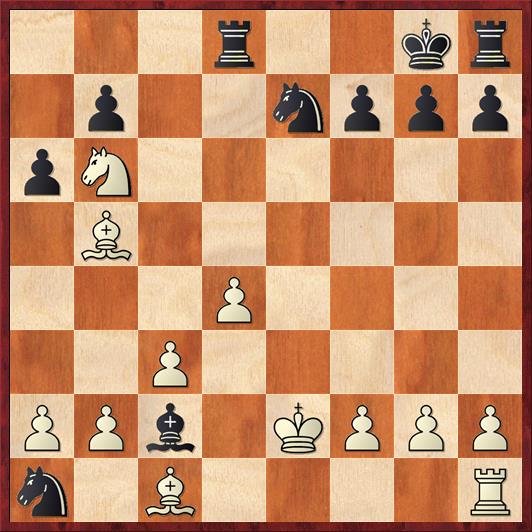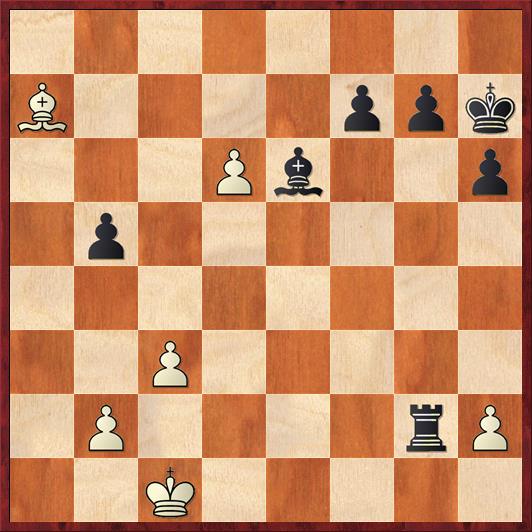One of the kids who has been coming longest to the Aptos Library Chess Club is named Alex. He’s maybe 12 or 13 years old. Over the years he has gotten more interested in chess and less interested in making trouble, and he has now reached the point where he is definitely the #2 and possibly (at times) the #1 player in the club. (We have no formal rankings; this is just my general sense.)
At this week’s club I played two games with Alex and I was really, really impressed, especially by the first one. It seems to me as if he has just taken a quantum leap in his chess, just since the last time I played him a month or so ago. Although there were definitely some mistakes in this game, in some ways they were “good mistakes,” and they were accompanied by other moves that were just plain good. This is something I had never seen from him before. Previously he would alternate between playing a good move and then a terrible move, and didn’t have any consistency. I told him afterwards that it was the best game I’ve seen him play. He was like, “Whatever. Let’s play another.”
Here is the complete game. I know it’s a bit raggedy and I didn’t play all that well. But I don’t care about that; I just think it’s a great example of how a kid improves.
Alex – Dana
1. e4 e5 2. Bc4 Nf6 3. Qf3?
Okay, lesson one. Alex has won dozens of games in the chess club with the Scholars Mate, Bc4 and Qf3 and Qxf7 mate. He hasn’t learned yet that good players will not fall for this. Evan though 2. … Nf6 stops his plan dead, he continues by inertia.
3. … Nc6 4. Nc3 Nd4 5. Qd3 Bc5 6. Nf6 …
 Position after 6. Nf6. Black to move.
Position after 6. Nf6. Black to move.
FEN: r1bqk2r/pppp1ppp/5n2/2b1p3/2BnP3/2NQ1N2/PPPP1PPP/R1B1K2R b KQkq – 0 6
Here Black could play 6. … d6 and have a fine game because of White’s confused development. But I decided to try a more principled way of punishing his opening, sacrificing a pawn. In retrospect, I don’t think that the pawn sacrifice is clearly better.
6. … c6!? 7. Nxe5 d5 8. ed …
I would meet 8. Bb3 with 8. … Nxb3 9. ab Qe7, which at least recovers the pawn because of 10. f4?! de 11. Nxe4? Nxe4 12. Qxe4 f6.
8. … cd
And now Alex plays an amazing move.
 Position after 8. … dc. White to move.
Position after 8. … dc. White to move.
FEN: r1bqk2r/pp3ppp/5n2/2bpN3/2Bn4/2NQ4/PPPP1PPP/R1B1K2R w KQkq – 0 9
9. Nxd5?! …
Okay, to be honest I think that Alex just miscounted the attackers and defenders. He’s still at a level where he does that sometimes. Still, he does get some real counterplay for his unintentional sacrifice!
9. … Nxd5 10. c3 …
I like his spirit! Aggressive play is his only hope.
10. … Bf5
This looks great, but actually it’s not quite so simple. Alex again finds the right move.
11. Bb5+! …
If I take the bishop, I lose a piece.
11. … Kf8 12. Qc4 …
Escaping with a counterattack. Alex is playing good, heads-up chess.
12. … Nc2+ 13. Kd1? …
 Position after 13. Kd1. Black to move.
Position after 13. Kd1. Black to move.
FEN: r2q1k1r/pp3ppp/8/1BbnNb2/2Q5/2P5/PPnP1PPP/R1BK3R b – – 0 13
White’s last move gave Black a winning combination. Do you see what it is?
I think that under tournament conditions, I would have seen the right move for Black. Under chess club conditions, supervising 16 kids while playing this game and taking only a few seconds per move, I completely missed it.
13. … Nxa1??
Actually, when I played this move I had a feeling it was wrong, but I also thought, “This will be instructive for Alex. I want him to learn to not give up, and to play for counterattack when his opponent wins material.” So I somewhat deliberately played the way a 1200 or 1400 player would, and didn’t look that hard for the best move.
The shot I missed was 13. … N(either)e3+!! Black’s knights are like hydra heads. You chop one, and the next one appears at e3 and wins your queen.
In retrospect I’m sorry I missed this, because it would also have been instructive for Alex, but in a different way. It points out why you don’t want to bring your queen out too early.
14. Qxc5+ Kg8 15. Nd7? …
Aside from 3. Qf3, this is the one move of Alex’s that I dislike the most in this game and that shows where he needs to improve. The knight was already beautifully posted on e5. It didn’t have to move again. He should try to get his other pieces in the game with 15. d4. Every step brings him closer to winning the knight on a1 and regaining his lost material.
15. … Bc2+ 16. Ke2 Qe7+ 17. Qxe7 Nxe7 18. d4! …
Good! Looks like Alex read my last comment.
18. … a6 19. Nb6 Rd8
 Position after 19. … Rd8. White to move.
Position after 19. … Rd8. White to move.
FEN: 3r2kr/1p2nppp/pN6/1B6/3P4/2P5/PPb1KPPP/n1B4R w – – 0 20
Now Alex makes another mistake:
20. Bg5? …
Like 13. Kd1, I think of this one as a good mistake. In general, when you’re teaching beginners, I think you have to distinguish between good mistakes and bad mistakes. A bad mistake, like 3. Qf3 and 15. Nd7, is a move that shows that you really don’t understand what you’re doing. These are moves that a good chess player should not even consider seriously. A good mistake, like 13. Kd1 and 20. Bg5, is a move that makes complete sense for the position, that has a plan behind it, but just happens to have a freaky tactical flaw. Of course one eventually needs to stop making these mistakes too, but for a player at the 1200 or 1400 level, they are a lesser sin.
Alex should have played 20. Bc4 or 20. Bd3, when I don’t see any way for Black to rescue the trapped knight on a1. White would be completely back in the game. The move he chose was good on general principles — it activates his last minor piece, discovers an attack on the knight, and also attacks my undefended knight on e7. But it just tactically comes up short. He missed the pin on the e-file.
20. … ab! 21. Bxe7 Re8 22. Nd5 Be4!
And now, alas, his house of cards in the center collapses.
23. Kd2 Bxd5 24. Bc5 Bxa2 25. Rxa1 …
Amusingly, on move 24 I suddenly thought that I had screwed up and that I was a pawn down. I forgot about my stupid rook on h8! If you took that piece off the board, this would look like a completely normal position. Instead, Black is a rook up and the game is over. Nevertheless, there are a couple more interesting moments that showed me how Alex has progressed.
25. … Bc4 26. Ra7 h6 27. Rxb7 Re2+ 28. Kc1 Rxf2
This is riskier than necessary, but again I was trying to imitate how a typical greedy 1200 or 1400 player would play in the position. I wanted to see if Alex would figure out where his tactical chances were. He did!
29. d5! …
Correct! Discovered attack! He has been paying attention during our lessons.
29. … Rxg2
Continuing to simulate the greedy 1200 player, but it also happens to be a good move.
30. d6 …
Passed pawns must be pushed. Alex is passing the test with flying colors.
30. … Kh7 31. Bb6! …
Every move is correct! He controls the queening square. I am so proud of how he’s playing (even though I’ve made sure that I am still winning).
31. … Ra8
Threatening mate, and 32. Kb1 doesn’t stop it because 32. … Bd3+ chases the king back into the mating net.
32. Ra7 Rxa7 33. Bxa7 Be6
 Position after 33. … Be6. White to move.
Position after 33. … Be6. White to move.
FEN: 8/B4ppk/3Pb2p/1p6/8/2P5/1P4rP/2K5 w – – 0 34
Even here, where Black is a rook up and the game should be long since over, Alex comes up with one last little trick.
34. b3! …
When I saw him play this I was just blown away. If 34. … Bxb3?? White actually wins! 35. d7 Rc2+ 36. Kb1 Rd2 37. Bd4 and there is no way to stop the d-pawn. Of course I would not fall for this, but it seemed to me like a quantum leap in the sophistication of Alex’s play.
34. … Rxh2 35. c4 bc 36. bc Bd7
Now there are no more tricks. Alex kept on playing until I queened a pawn, then resigned.
In general I don’t like playing the kids in chess club very much, because there’s this constant tension between wanting to win the game and wanting to give them a chance to play some good moves. But I was very pleased with this game. I didn’t have to compromise my chess integrity too much, and Alex found way more good moves than I ever expected him to.


